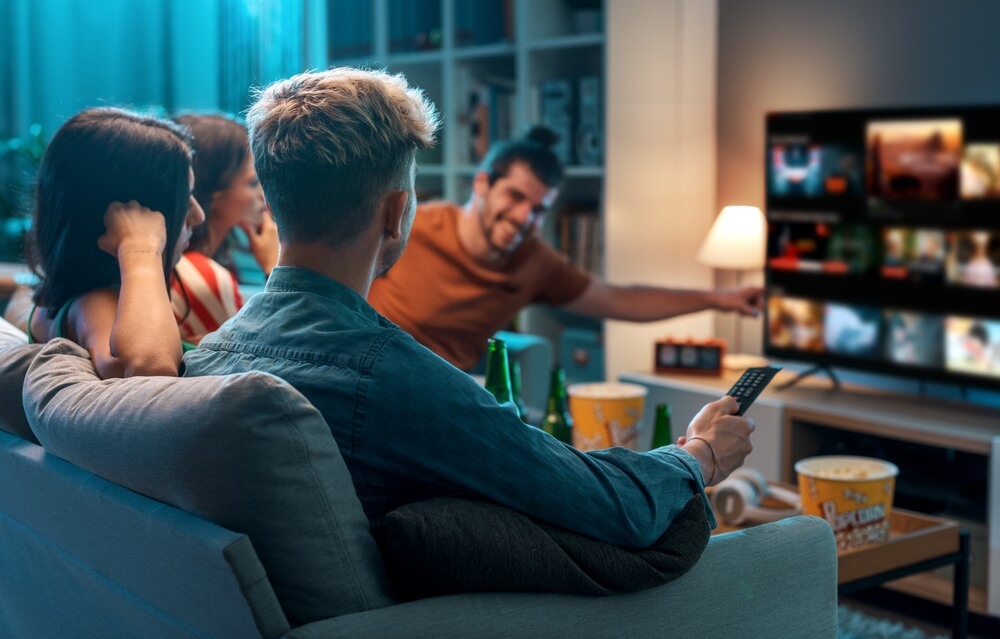
The Ultimate Home Cinema Experience: A Beginner's Guide to Installation Perfection
A home cinema, also known as a home theater, refers to a dedicated room in your home designed specifically for enjoying movies, TV shows, and video games on a large screen with powerful sounds like a commercial movie theater. The goal of a home cinema is to recreate the immersive theatrical experience with high-quality audio and video in the comfort of your own home.
This beginner’s guide covers the basics for first-timers looking to build their dream home cinema from scratch. Follow the tips here to design and install a small, dedicated theater in your residence with superb results guaranteed to wow you and your guests during movie nights.
Choosing a Room
When selecting which room to transform into your home theater, consider these aspects for the best experience:
Size
– Bigger is usually better to accommodate multiple seats and audio equipment. Aim for a longer, wider room if possible. The minimum size recommended is 10 x 10 ft.
Location
– Pick a quiet, remote room away from noisy areas of the home. Basements work very well to prevent sound leaks.
Windows
– Cover all windows completely to control lighting. Blackout curtains over windows help create a dark viewing environment.
Electrical
– Ensure the room has ample power outlets spaced around the perimeter to plug in all components. Pre-wire for ceiling speakers too.
Insulation
- Adding sound isolation insulation to walls minimizes sound transfer to other rooms for loud movie viewing late at night.
Isolation
– Choose the most private, dedicated space possible solely for theater use rather than a multi-use room.
Room Construction
If starting construction on a new home theater room, install these recommended elements during the building phase:
Drywall
– Use specially designed soundproof drywall like QuietRock for noise-blocking inner walls. Stagger wall studs for fewer sound transmission gaps.
Doors
– Solid core doors with perimeter seals block more sound leaks compared to hollow doors. Consider a specialty acoustical door.
Ventilation
– Allow for proper temperature regulation with a vent that doesn’t pass sound to other rooms.
Flooring
– Add thick carpet padding for sound absorption. Or install mass-loaded vinyl flooring specifically made to reduce noise.
Electric
– Pre-wire ceiling for surround speakers. Add separate circuits to wall outlets to prevent blown fuses from high equipment power draw. Consider outlets at multiple seating heights.
Lighting
– Install dimmable lights on multiple switches to control lighting scene brightness and mood. Wall sconces, step lights, and rope lights also work well.
If using an existing room, try to match these construction recommendations as closely as possible during your theater installation.
Display Screen
The screen is arguably the most vital component for realizing a cinema visual experience at home. Carefully research which displays technology and size is right for your space.
Screen Types
Fixed frame and pull-down manual screens.
Motorized electric screens with remote control.
Wall-mounted screens.
Projection screen paint (very affordable DIY option!)
Screen Material
Matte white
– Best for rooms with some ambient light. Provides a wide viewing angle.
Angled white
– Retains contrast in brighter rooms. Narrows the viewing angle somewhat.
Grey or silver screens
– Unaffected by ambient light in the room. Works only when the room is very dark for movie viewing.
Acoustically transparent screens
– Special screens that allow mounting speakers directly behind the surface rather than along walls. Provides better audio localization.
Screen Size:
Measure room length and seating distance to calculate the ideal screen size. As a rule of thumb, your screen width should represent 25% to 30% of the distance from the front row of seats to the screen surface. So, in a 10 ft room, the optimal screen size is roughly 72 to 86 inches diagonal.
Getting Screen Dimensions Right Matters Most! Don’t skimp on screen size despite budget. A larger screen immerses you in the movie experience versus watching films on small TV displays.
Audio Equipment
Sound is half of the equation for an engrossing home theater atmosphere. Outfit your space with a mix of quality speakers strategically placed all around the room at optimal angles.
Speaker Types Needed
Front Left & Right Speakers
– Large, powerful speakers placed evenly on either side of the screen to output primary sounds.
Center Channel Speaker
– Matches front speakers in size and timbre. Place directly above or below the screen for enhanced dialogue and vocal clarity.
Surround Sound Speakers
– Send atmosphere effect sounds to the sides and rear. Compact satellite speakers work well to conserve space.
Subwoofer
– Essential for explosions and deep low-frequency sound effects. One or two compact powered units placed in room corners.
In-Wall & In-Ceiling
– For seamless immersive installation without speaker stands cluttering the space. Pre-wire first!
Soundbar
– Simpler all-in-one front speaker alternative. Advanced sound processing approximates surround sound. Lacks true fidelity of discrete speakers, however.
Speaker Placement Guidance
Front Speakers
– Place equidistant left and right from the centered seating viewing position, roughly 10 to 12 feet apart. Ear height at the seated listener is optimal. Angle both speakers inward to focus sound on viewers.
Center Speaker
– Install centered left to right and above or below the screen surface. Angle down or up towards the ear level of seated viewers. Keep a clear line of sight from speaker to listener with no obstructions.
Side & Rear Speakers
– Position 2 to 4 feet above ear level when seated, along the side and back walls. Space evenly left to right for balanced surround effects. Angle speakers towards the central seating area.
Subwoofer(s)
– Set into each of the front room corners to prevent sound waves canceling each other out from close wall proximity. Adds bass resonance.
Methods to Master Light in Your Home Cinema:
Blackout Window Shades
– Affordable basics for blocking daylight. Upgrade to electric motorized shades.
Blackout Curtains
– Heavyweight fabrics prevent any outdoor light from seeping in. Layer curtains over shades for overlapping light locks.
Dimmer Switches
– Install wall-mountable dimmers to precisely control connected ceiling recessed can lights and wall sconces. Many models offer remote or app-based manipulation. Replace old switches.
Smart WiFi Bulbs
– App-enabled individual lighting elements like Phillips Hue bulbs allow custom brightness/color changes from smartphones. Group lights in zones.
Ambient LED Strip Lights
– Stick self-adhesive strips along steps, seats, and doors as decorative accent lighting. RGB strips let you pick fun colors!
Control4 / Crestron
– Ultimate professional home automation systems manage every electronic in the cinema and the whole residence via one integrated interface. Expensive but powerful for tech enthusiasts.
By regulating all light sources from bright to pitch black easily, you completely control the viewing mood in your home’s dedicated big-screen movie room from your seat instantly.
Follow professional guidance on quantity and location advised per acoustic treatment type relative to your distinct room measurements and speaker system layout. Correct sound deadening accommodates both audio and video optimally.
Conclusion
This comprehensive guide only begins to scratch the surface of constructing your dream home theater environment. Take your time planning each component carefully based on room conditions and performance priorities within budget.
Future proof, wherever possible allows expansion flexibility down the road as AV standards and streaming options progress over years of enjoyment. With meticulous installation expertise, even novice home cinema builders can craft an incredible entertainment space rivaling commercial megaplexes.
You don’t need Hollywood movie mogul resources to direct, produce and star in exceptional movie experiences from the luxury of home. Just follow the framework outlined here one step at a time. Before you know it, kick back in your completed high-tech theater for endless immersive film viewing on par with the multiplex in your PJs!

Explore 0%* APR financing for your project
*0% interest is for promotional period only.







